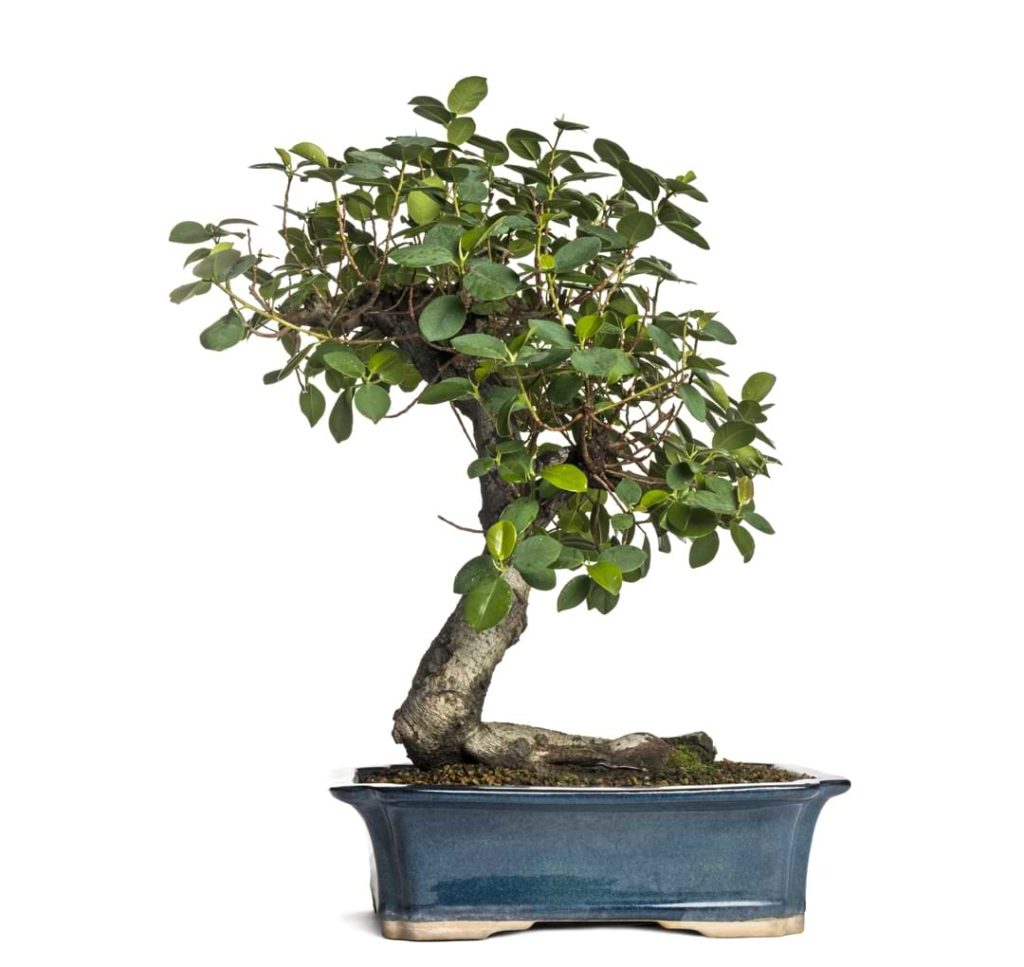You may have seen pictures on Pinterest and Instagram of bonsai trees adorning office desks or bookshelves or livening up a living room and gotten the impression that bonsai trees are indoor plants. The truth is that the majority of bonsai species need direct sunlight and the temperature changes of the outdoors to thrive.
But if you had your heart set on an indoor bonsai tree, here’s the good news: It’s all about choosing the right bonsai variety and caring for it properly to set it (and yourself) up for success.
The ABCs Of Indoor Bonsai Tree Types
There are multiple categories of bonsai trees, and of those, only two are suitable for an indoor habitat: tropical or subtropical varieties. To help you out, we’ve compiled a list of the bonsai tree types that do well indoors with the right care and conditions.
Ficus Bonsai
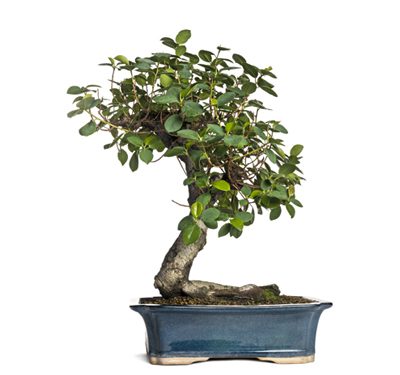
We are listing this one first because it is by far the best indoor bonsai tree for beginners. While most indoor bonsai need high humidity and plenty of light, the ficus, or fig plant, is a hardy and adaptable evergreen plant that can handle low humidity and less light than most.
There are many varieties of ficuses to choose from, the most popular being the Ficus Benjamina and Ficus Retusa, and these beautiful trees can grow fruit in a wide range of colors. Some can even produce flowers. Ficus trees are known for their vivid green leaves with pointed tips and will provide a burst of color to your home.
Carmona Bonsai
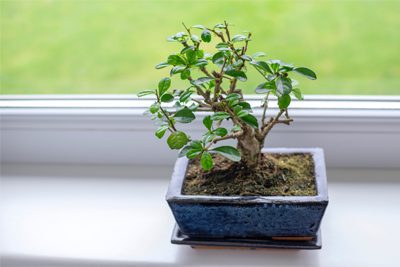
The Carmona, or Fukien Tea, bonsai is popular not just because it can thrive indoors, but also because of the small white flowers that can blossom year-round and the red fruit it produces. While this plant does well inside with strong light, it is also recommended that you give it some time outdoors in the spring and summer.
Schefflera Bonsai

Picture by Cliff from Arlington, Virginia, USA – Umbrella Tree (Schefflera arboricola) Uploaded by AlbertHerring, CC BY 2.0, https://commons.wikimedia.org/w/index.php?curid=29535129
Otherwise known as the Dwarf Umbrella Tree, schefflera has thin trunks and canopy growth (hence its name). These plants take well to low light and low humidity, similar to the ficus, but if you want a plant you can shape and train, keep in mind that schefflera don’t do well with wiring.
Chinese Elm Bonsai

When you picture a classic bonsai tree, it’s probably the Chinese elm that comes to mind. Another indoor tree that’s ideal for beginners, they grow quickly and can be pruned and trained to your liking. Plus, if you over- or under-water, it’s not as detrimental as it would be with other types.
Crassula (Jade) Bonsai
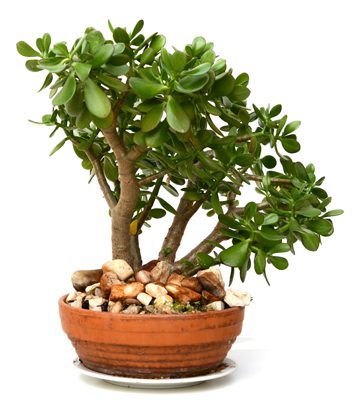
This shrub-like bonsai tree has a thick trunk and leaves and is sensitive to cold, making it ideal for indoor cultivation. Jade bonsai plants hold plenty of water in their leaves, so don’t over-water and be sure to place your tree in a well-draining pot.
Serissa Japonica (Snow Rose) Bonsai
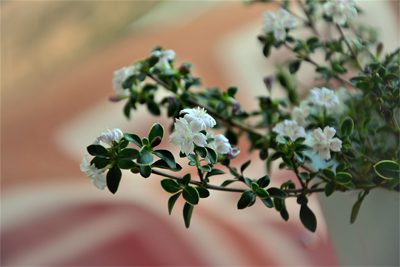
Last but not least (really, we could go on forever), the Serissa Japonica bonsai is known for its stunning tiny white flowers that bud in the spring and summer. Known as “the tree of a thousand stars,” we’ve added this one last because it’s not as easy to care for as our other five choices. It can be sensitive to changes in temperature and location, as well as light and water levels. It can grow both indoors and outdoors depending on the climate where you live.
The Care And Keeping Of Indoor Bonsai Trees
Okay, now for what you’ve been waiting for. Here are our best tips for taking care of your indoor bonsai. Remember, these are general tips. Be sure to research your particular variety to tailor your care to achieve optimal health.
1. Light, Light, And More Light
Bonsai need a lot of light, plain and simple. And even if you live in a sunny location and place your plant by an east-, south-, or west-facing window, you may still need a fluorescent or high-intensity light to meet its lighting needs.
2. Keep It Humid
These plants are called tropical for a reason. Our homes usually do not provide a humid enough environment (thanks to heating systems and air conditioning) for bonsai trees, but there is a work-around. Consider placing your bonsai on a humidity tray, mist your tree, and allow warm air to circulate through an open window.
3. Hydrate
Don’t water just because. Make sure you monitor your tree’s soil so it doesn’t get too dry. For some trees this may be daily, for others, multiple weeks could go by without needing to water. It’s wise to use a moisture meter to avoid over-watering. When it is time to give your tree a drink, let the water soak all the roots until water runs out of the drainage holes in your pot.
4. Warmer Is Better
Indoor bonsai need warmth. In general, room temperature is ideal and it’s wise to avoid placing your plant in a location where temperatures dip below 50 degrees. If you live somewhere with cold winters, be careful about putting your plant near a window or door when the temperatures drop. If you are going out of town, set your thermostat to a healthy temperature for your plant. Subtropical types can handle lower temperatures, so make your choice wisely based on your environment.
Are You Ready For Your Bonsai?
We hope so! And if you’re worried about diving into something new or setting your plant up to thrive, we are here to help with our plethora of resources and our shop that has what you need to grow your indoor bonsai tree. Stay tuned for a breakdown of the best outdoor bonsai trees!

